Spiderweb donuts aren’t your everyday treat. They’re a playful, slightly chaotic twist on classic fried dough, inspired by those late-night craving moments. The web pattern adds a quirky visual that makes even the simplest donut a conversation piece.
Why these donuts keep calling me back
The playful web pattern and crispy texture make every bite a little surprise. They’re imperfect, a little wild, which feels honest and satisfying. Plus, they remind me of childhood experiments—messy, fun, and totally worth the cleanup.
Inside the web: ingredients and their stories
- All-purpose flour: The backbone of the dough—gives structure and chewiness.
- Active dry yeast: Leavens the dough, making the donuts light and airy.
- Sugar: Sweetens and helps with browning; opt for brown sugar for a richer flavor.
- Milk: Provides moisture; warm milk activates the yeast.
- Eggs: Bind the dough; add richness and tender crumb.
- Butter: Adds flavor and softness; unsalted is best for control.
- Powdered sugar: Creates a glossy, sweet glaze; can be swapped with honey or maple syrup for a different vibe.
Tools of the trade for webby perfection
- Deep-fry thermometer: Ensures the oil stays at the perfect frying temp.
- Piping bag or squeeze bottle: For creating the web patterns with glaze.
- Slotted spoon: To lift donuts from hot oil without breaking them.
- Wire rack: For draining excess oil and cooling.
- Mixing bowls: To prep dough, glaze, and other components.
Step-by-step to a crispy, webbed delight
Step 1: Mix the flour, sugar, and a pinch of salt in a large bowl. Warm milk to about 37°C (98.6°F), then sprinkle yeast over it. Let it sit for 5 minutes until foamy.
Step 2: Add the eggs and melted butter to the yeast mixture. Combine wet and dry ingredients until a sticky dough forms.
Step 3: Knead the dough on a floured surface for about 8 minutes until smooth. Cover with a damp cloth and let rise for 1 hour, until doubled in size.
Step 4: Heat oil in a deep fryer or large pot to 180°C (356°F).
Step 5: Divide dough into small balls, then stretch and shape into donut forms. Fry in batches for 2-3 minutes each, until golden and crisp.
Step 6: Remove with a slotted spoon, drain on paper towels, then let cool slightly.
Step 7: Prepare your glaze: mix powdered sugar with a splash of milk and vanilla extract.
Step 8: Dip the donuts into the glaze, then use a piping bag to draw web-like patterns on each donut.
Step 9: Let the glaze set for about 15 minutes before serving.
Cooking checkpoints and tips to keep in mind
- Dough should be sticky but manageable; if too wet, add a little more flour.
- Oil must be hot enough before frying; test with a small piece—if it sizzles immediately, you’re good.
- Donuts should turn a deep golden brown; undercooked ones will be pale and greasy.
- Glaze should be smooth and shiny; if thick, add a splash of milk to loosen it up.
Common pitfalls and how to dodge them
- Oil temperature too high or too low.? Use a thermometer to keep oil at 180°C (356°F). If too cool, donuts soak up oil; if too hot, burn.
- Dough too sticky to shape.? Knead the dough until smooth and elastic. If sticky, dust with a bit more flour.
- Overcrowding the fryer.? Fry in small batches to prevent oil temperature drop. If overcrowded, donuts become greasy.
- Glaze too thin or thick.? Set glaze with a pinch of lemon juice if too thick. If runny, add more powdered sugar.
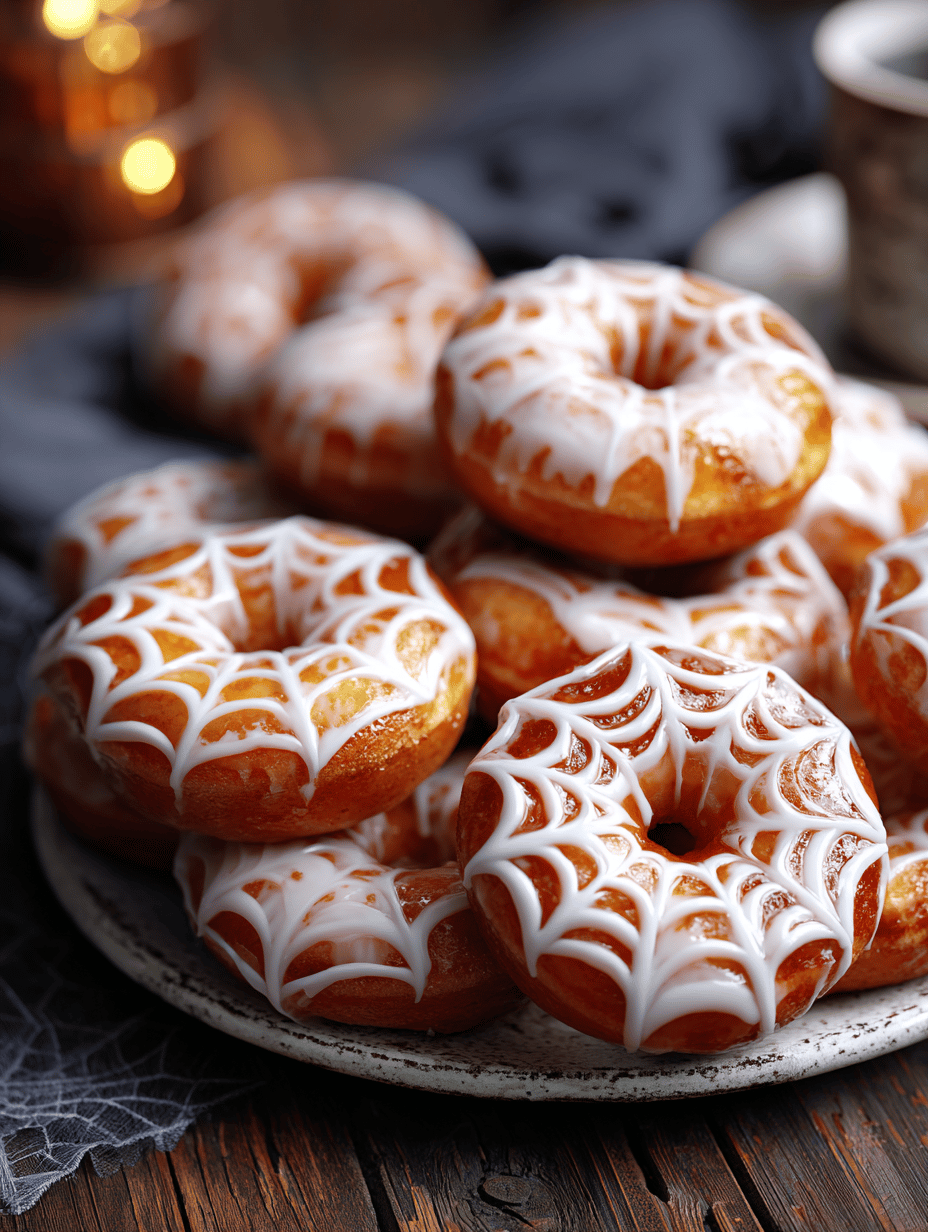
Spiderweb Donuts
Ingredients
Equipment
Method
- In a large mixing bowl, combine the flour, brown sugar, and a pinch of salt. In a separate small bowl, warm the milk until just steaming, then sprinkle the yeast over it. Let sit for 5 minutes until frothy and bubbling—this activates the yeast.
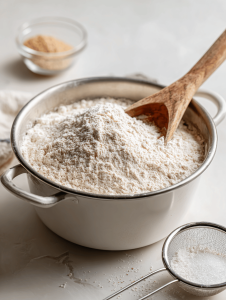
- Add the eggs and melted butter to the yeast mixture, then pour this wet mixture into the dry ingredients. Stir until a sticky dough forms, pulling ingredients together.

- Turn the dough out onto a floured surface and knead for about 8 minutes until smooth, elastic, and slightly tacky. Cover with a damp cloth and let rise in a warm spot for 1 hour, until doubled in size.
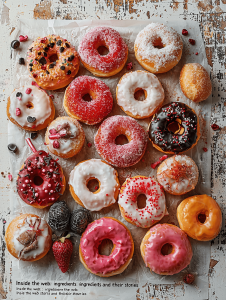
- Heat oil in a deep fryer or large pot to 180°C (356°F). Use a thermometer to keep the temperature steady for perfect frying.
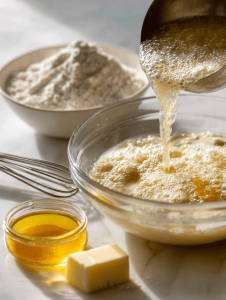
- Punch down the risen dough and divide into small, golf-ball-sized pieces. Gently stretch and shape each piece into a round donut shape with a hole in the center.
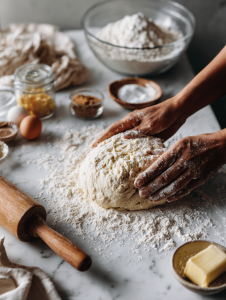
- Carefully lower the shaped donuts into the hot oil in batches, frying for 2-3 minutes until they turn a deep golden brown and sound crispy when tapped. Use a slotted spoon to turn and remove them.
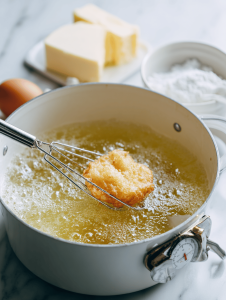
- Transfer the fried donuts to a wire rack to drain excess oil and cool slightly. The donuts should be crispy on the outside and soft inside.
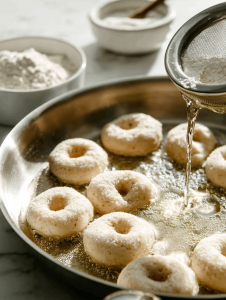
- In a small bowl, whisk together the powdered sugar with a splash of milk and a few drops of vanilla extract until smooth and glossy. This will be your glaze.
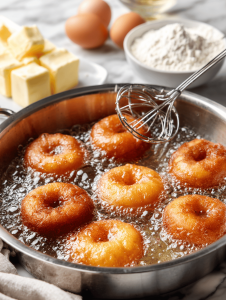
- Dip each donut into the glaze, letting excess drip off. Place the glazed donuts on a clean wire rack or parchment paper.
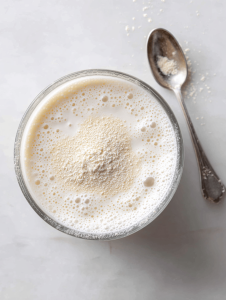
- Using a piping bag or squeeze bottle filled with remaining glaze, draw web-like patterns on each donut. Be playful—chaotic lines create the web effect.
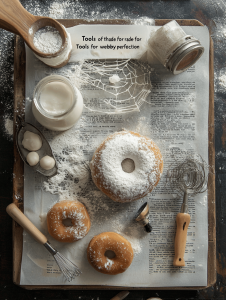
- Allow the glaze to set for about 15 minutes until shiny and firm. Serve your spiderweb donuts fresh and enjoy their playful, crispy texture with a sweet, glossy finish.
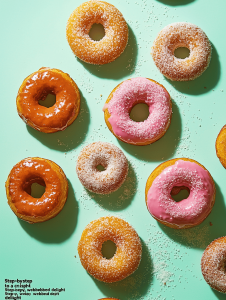
Leave a Reply